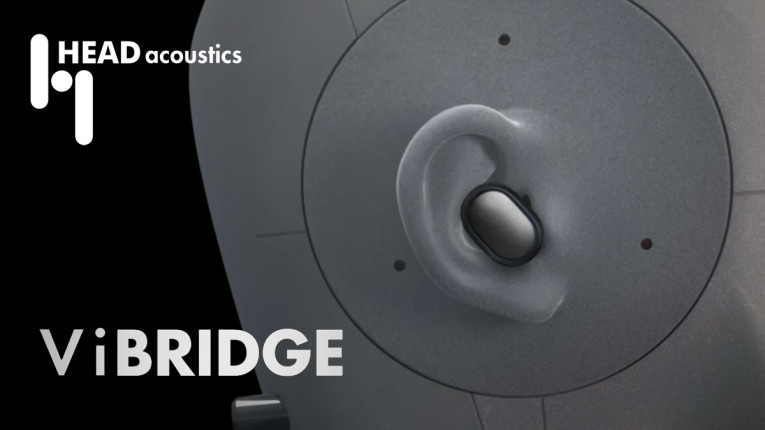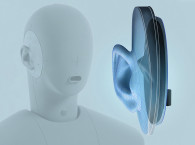
The German manufacturer of audio test and measurement solutions is the first to come to market with a complete suite to support product development combining structure-borne sound. Such products are able to perform better separation of the user's own voice from the noise or concurrent talkers in the surrounding environment, improving noise cancellation and speech quality in noisy environments.
Voice and audio processing applications are quickly evolving in many different fronts, including the introduction of voice extraction, advanced hearing assistance and audio augmentation solutions all processed on-device. To enable such sophisticated designs, headphones and in-ear devices need to combine new transducers with different types of sensors, and manufacturers are increasingly exploring the possibilities of bone conduction techniques. Yet, the industry ability to evaluate device performance using bone conduction, since no appropriate test equipment and methods were commercially available until now.
Structure-borne sound simulation is crucial when testing this type of designs, and its evaluation and optimization for different conversational situations can only be achieved with the complementing simulation of air-borne and structure-borne sound generated by the human voice. HEAD acoustics created an integrated solution in its ViBRIDGE technology, combining lab-based background noise simulation and dedicated test suites for its ACQUA analysis system, which are available as an upgrade. According to the company, ViBRIDGE offers an "all–in–one" solution for testing, optimization, and validation of headphones and in-ear devices using bone-conduction sensors.
Bone conduction sensors in such designs, such as true wireless stereo consumer earbuds and hearables, office headsets, or hearing assistance devices, allow for better noise reduction and significantly help improve the speech signal quality in communications. For testing such devices, HEAD acoustics combined a bone conduction actuator integrated into its HEAD acoustics HEL/HER 4.4 Artificial Ear, in order to induce structure-borne sound. This integration is now available as a standard configuration, with the launch of the new Head and Torso Simulator HMS II.3 ViBRIDGE.
The ViBRIDGE solution also combines HEAD acoustics' ACQUA measurement and analysis software, and its labCORE modular interfaces to generate the equalized signal for both the Artificial Mouth and the HEL/HER 4.4 ViBRIDGE pinnae. The combined solution allows developers to have for the first time a realistic evaluation solution of the human structure-borne voice signal for testing suitable in-ear designs.

In order to understand the human structure-borne voice transmission of a user's voice, HEAD acoustics conducted thorough measurements of the individual spectra of many talkers' air-borne and structure-borne sound. This allowed to create an overview of the spread of individual differences. These studies were the foundation to derive average transfer functions that can now be uses to create a realistic structure-borne sound simulation.
Using high-precision electro-mechanic actuators, the new HEL/HER 4.4 ViBRIDGE pinnae realistically simulates bone-conducted near-end speech to any intra-concha- or insert-type device with integrated bone conduction sensors. This novel measurement technology offers reliable and proper testing of such devices, including evaluating echo cancellation and double-talk performance in sending direction.
HEAD Acoustics will demonstrate its ViBRIDGE technology at Mobile World Congress in Barcelona (https://www.mwcbarcelona.com February 27 – March 2, 2023), showcasing for the first time the new HEL/HER 4.4 ViBRIDGE pinnae, combined with the ITU-T P.57 type 4.4 ear.
www.head-acoustics.com/vibridge








